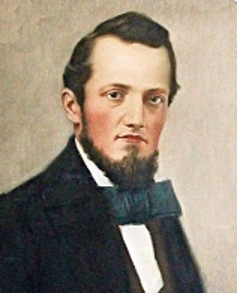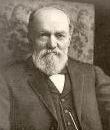Wurlitzer
Rudolph Wurlitzer was born in Schilbach, Saxony, Germany, in 1829. In 1853, he emigrated to America at the age of 24. The family business had already, from the 17th century, built up a good reputation in Saxony as manufacturers and sellers of musical instruments.
In 1856, Rudolph Wurlitzer founded THE WURLITZER COMPANY in Cincinnati, Ohio. He started importing his family's musical instruments from Germany to sell in the US market. In 1880, he himself started manufacturing pianos in America. In 1896, the 'Tonophone', the first coin-operated piano, was introduced on the market.The next adventure for Wurlitzer came with the rise of film and theatre organs.These instruments "Mighty Wurlitzers" were a sensation when they came on the market in the era of the "silent film" (there is still one in the Tuschinski theatre in Amsterdam, among others)
In the early 1930s, Farny Wurlitzer, the youngest son of the firm's founder, bought a patented music box mechanism. He hired highly skilled professionals such as inventor, Homer Capehart, and designer Paul Fuller. At the new location in North Tonawanda, NY, they designed the first Wurlitzer jukebox "Debutante". This was the beginning of "the golden years" for Wurlitzer. Wurlitzer soon had 60% of the growing jukebox market.


Rudolph Wurlitzer (1831 - †1914)
1933 was an important year in WURLITZER history, as the Wurlitzer Jukebox became a familiar sight to customers in restaurants and bars. After inserting a coin, one could select 1 song among 10 78-rpm records. The jukebox was called the 'Small Man's Concert Hall'.
During the war, Wurlitzer was forced to virtually halt production of jukeboxes because, by state order, the factories were being used to produce important war products, such as radar components. However designer Paul Fuller had continuously worked on new jukebox models during this period. The result was the wurlitzer 1015. The most famous jukebox of all time. It became a big hit in 1946.Between 1946 and 1947, as many as 56,000 copies of this machine were built and sold in just 18 months. More than any other jukebox model.
In the early 1950s, the 45-rpm single made its appearance, and the possibility of 100 selections soon became the standard. Wurlitzer's leading position in the market was taken over by Seeburg.It was the time of jukeboxes with glittering chrome and magic lights.
In 1956, Wurlitzer produced its first jukebox with a selection of 200 titles, perfectly in time for the company's 100th anniversary. The model had to compete with Seeburg's famous V200.
Wurlitzer remained a major player in the market but declining sales and popularity of jukeboxes meant that by the late 1970s
However, from the early 1960s, special models were also made for the European market by the German establishment Wurlitzer GmbH . This factory continued to produce and marketed, among others, the CD jukebox "One More Time". Externally a copy of the famous 1015 from 1946! In 2013, however, production of these machines also came to an end.

